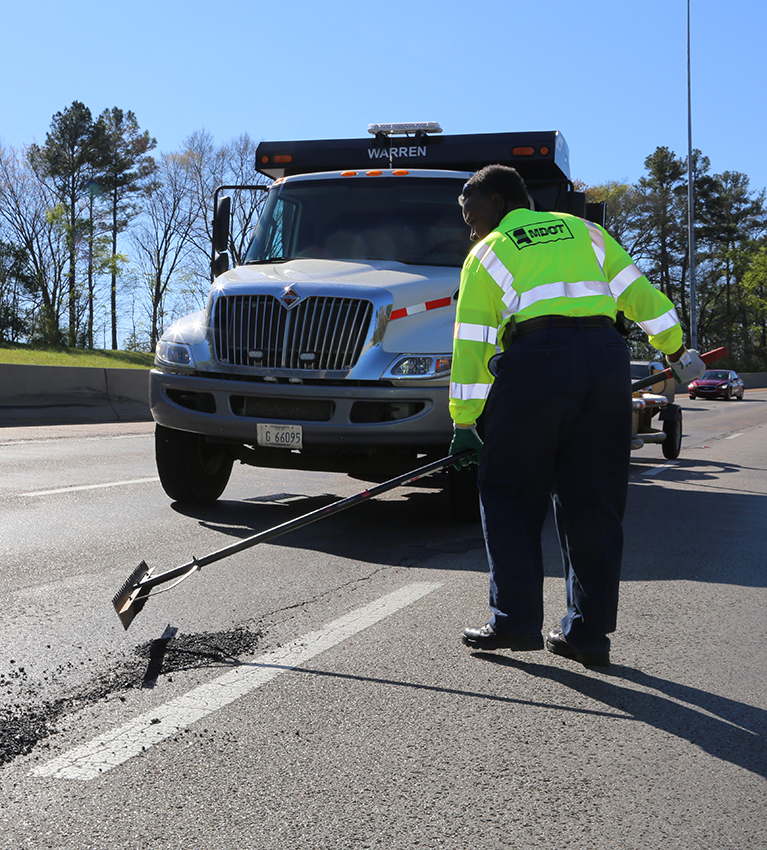Knowledge key when it comes to work zone safety
Every day, MDOT construction and maintenance crews experience driving behavior that puts their safety at risk. From distracted driving to speeding, highway workers understand that part of their workplace safety rests with the traveling public.
“Our highway workers see a lot in work zones, and in some cases, they are only separated from the traveling public by a plastic barrel, concrete barrier wall or nothing at all,” said Dick Hall, chair, Mississippi Transportation Commission. “Just one error can change a driver’s, passenger’s or highway worker’s life forever, that’s why knowing how to navigate a work zone is so important.”
A work zone is defined by the Federal Highway Administration (FHWA) as, “that part of the highway being used or occupied for the conduct of highway work, within which workers, vehicles, equipment, materials, supplies, excavations or other obstructions are present.”
Traveling through highway work zones can be frustrating, and dangerous, because drivers are presented with driving conditions that are unfamiliar.
MDOT and other state DOTs follow the Manual on Uniform Traffic Control Devices (MUTCD), developed by FHWA, which defines the standards used by road managers nationwide to install and maintain traffic control devices on roads open to public travel.
Work zones are set up according to the type of work being performed. Whether it’s a major interstate or a rural highway, knowing how to identify and follow advanced warning signs for the type of work zone motorists are about to encounter can help prevent crashes.
To learn more about advanced warning signs and common work zones, click here. By preparing for the amount of attention it requires to make it through a work zone safely, everyone can get home at the end of the day.
Highway workers make their ‘office’ as safe as possible by wearing proper equipment, having in-depth knowledge on handling machinery and following guidelines on how to properly and safely set up a work zone for the type of work. It is up to the driver to continue to keep that work zone as safe as possible by doing their part to take the same kinds of safety precautions as our workers.



